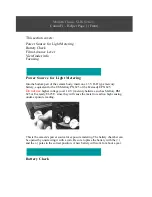
OfficeServ 100 Installation Manual/Ed.00
© SAMSUNG Electronics Co., Ltd.
10-3
10.1.2.5 Route Optimization
When a call is made to another system but is connected to the station within the same
system due to transfer or forward call, the trunk line call is automatically converted to a
station call at a certain time.
Aspects such as efficiency, functionality, and call sensitivity of the trunk line connecting
systems were considered.
10.1.2.6 Centralized Operator
This function enables you to conveniently call the attendant of another system as if calling
that of the same system, enabling you to operate only one attendant in the network.
However, the attendant using CTI is not applicable.
10.1.2.7 Caller ID Transfer
This function enables you to send the received Caller ID(CID) when transferring or
forwarding the received trunk line call to the station of another system.
10.1.3 Provide Q-SIG Additional Function
Networking of the OfficeServ 100 system provides Q-SIG additional functions as follows:
10.1.3.1 Call Transfer and Transfer Recall by Join
This function enables you to transfer the busy call to a station of another system as if
transferring calls within a same system. When the transferred call is not answered within
the defined time, the call is transferred back to the original caller.
10.1.3.2 Name Identification
When calls to stations of another system are dialed or connected, the name and phone
number of each party can be transferred according to the options.
10.1.3.3 CFU (Call Forwarding Unconditional)
This function enables you to forward all incoming calls to the station of another system.
10.1.3.4 CFB (Call Forwarding Busy)
This function enables you to forward calls incoming when busy to the station of another
system.
10.1.3.5 CFNR (Call Forwarding No Reply)
This function enables you to forward calls that are not answered within a certain time to the
station of another system.
















































